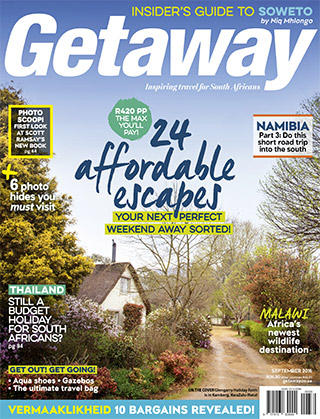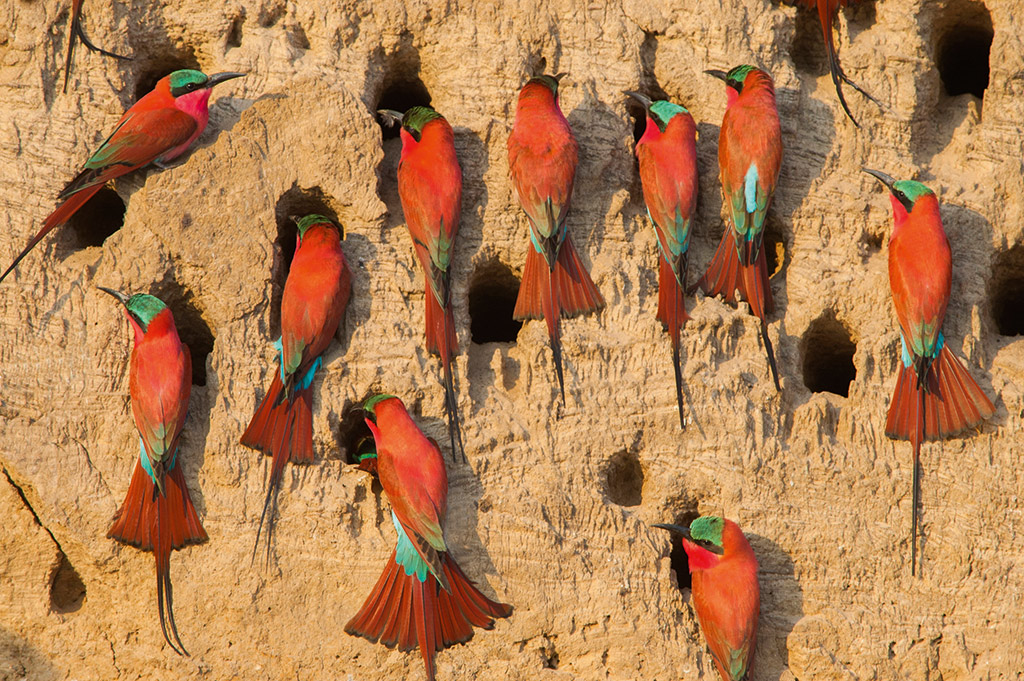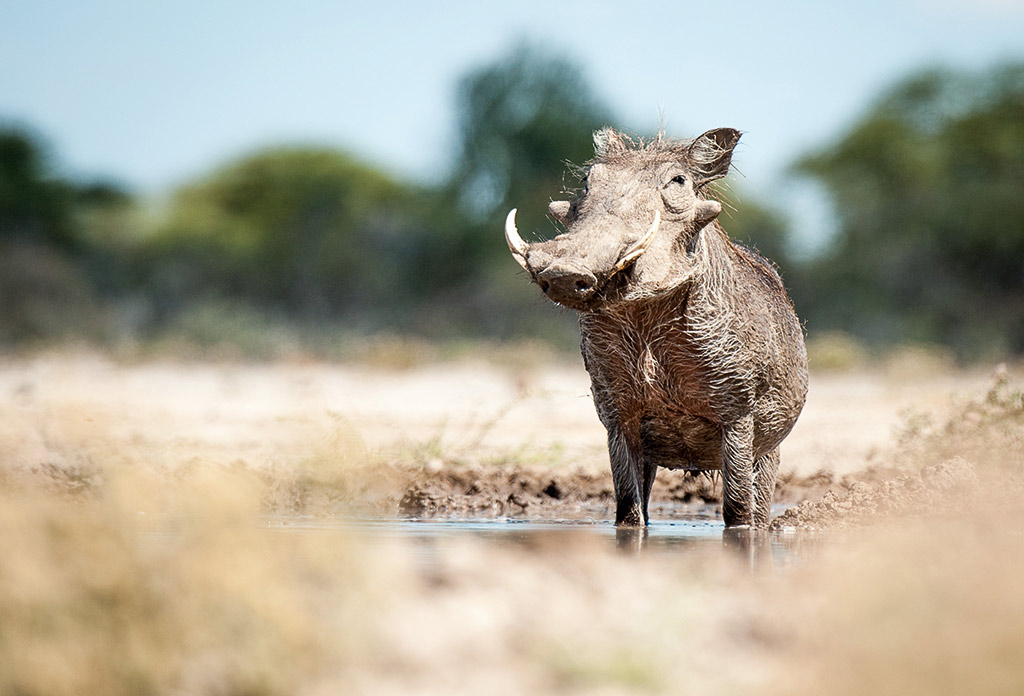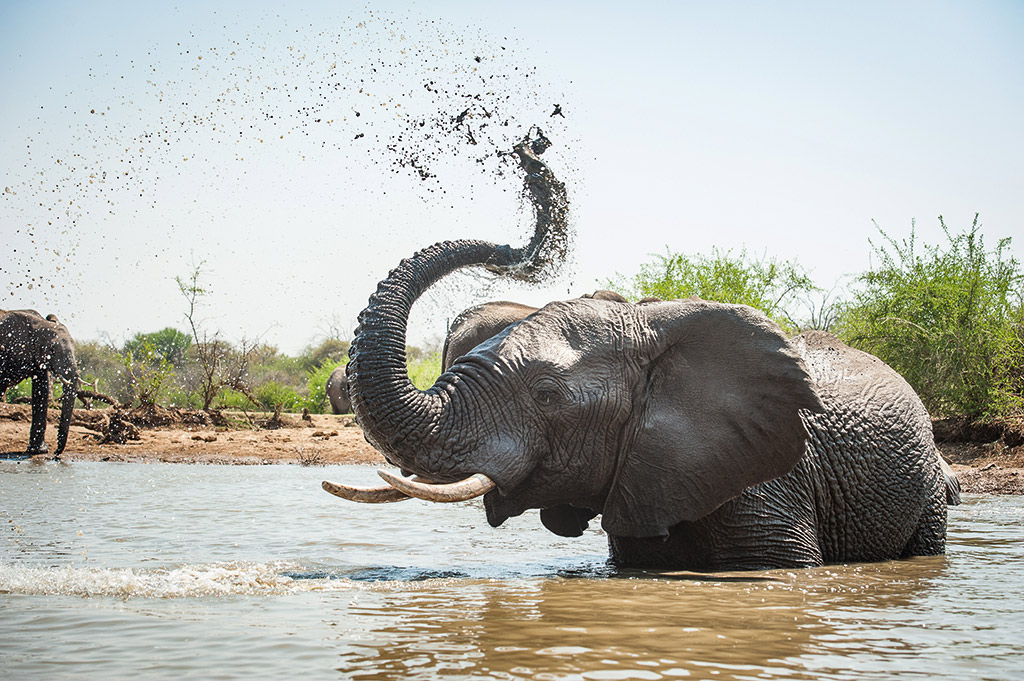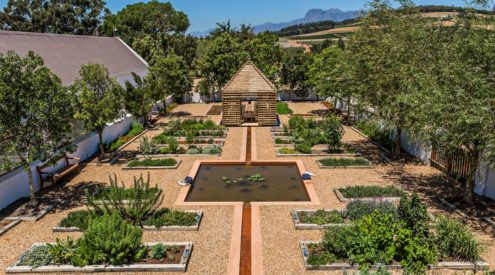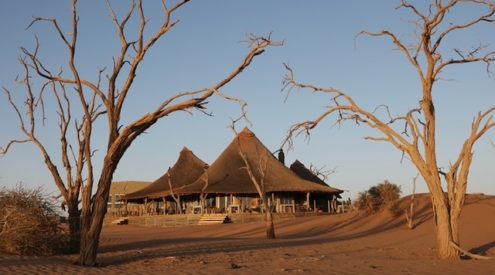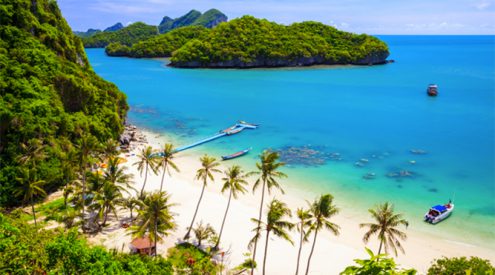Eye-to-eye is the best way to capture superb animal shots. Photographic safari specialist David Rogers rates his top hides in Southern Africa.
The recent flurry of photographic innovations, such as drones, BeetleCams and other devices, have helped photographers achieve unusual perspectives and startling new angles. Yet most award- winning wildlife photographs haven’t come from the skies or the back of a remote-controlled car. They’ve been conjured by those willing to sit in hides all day, and sometimes all night, for the perfect shot. Hides have come a long way since cavemen hid behind branches at waterholes waiting to club thirsty animals as they came to drink, and as you will discover, some of the newest hides employ such modern tech you will feel like you’ve walked into a top-end photo studio.
1. Zimanga hides
Northern KwaZulu-Natal, South Africa
When to visit: May to October
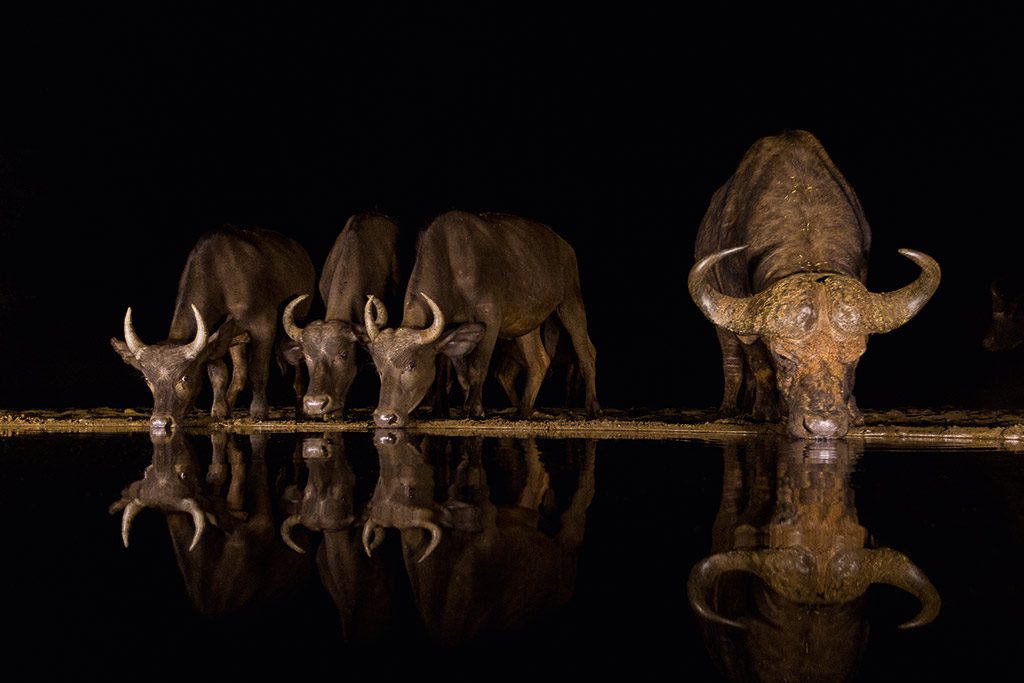
Photographer and reserve owner Charl Senekal teamed up with Hungarian wildlife photographer Bence Máté to create the most sophisticated hides I have seen anywhere in Africa. Bence is a former BBC Wildlife Photographer of the Year and is recognised internationally for his expertise in hide construction. Zimanga is a private reserve that covers 6 000 hectares of bushveld, fever trees and rolling hills. It is particularly well known for its birds, which number more than 400 species. It claims to be South Africa’s first lodge designed specifically for photographers, and offers game drives as well as a brace of outstanding hides: the Umgodi Overnight Hide, Zimanga Lagoon Hide, two reflection (or ‘bird-bath’) hides, the new Vulture Hide and a more basic, smaller mobile carmine bee-eater hide. At the five main hides, photographers shoot from behind special one-way reflective glass imported from Germany. This means that you can use relatively short lenses and the wildlife is undisturbed. The Lagoon Hide (shown left) offers exceptional opportunities and is near a small pool, which is kept topped up with fish to bring in birds. The Overnight Hide has air conditioning, laminated wood floors, four gimbal-head tripods, a sleeping area, kitchen and toilet (a rare luxury as far as hides go). There are also night alarms, activated when animals come to drink, and two sets of lights for creative lighting. The reflection hides, also air conditioned, are small but deadly effective, giving amazing perspectives of small birds drinking metres from the glass.
Getting there
A hide visit is from R1275 pp (SADC rate) and lasts three and a half hours (except for the overnight hide). Only 14 visitors or less are allowed on the reserve at one time. Doornhoek Homestead, opening this month, sleeps seven (groups or single travellers). R2400 per person including meals, two game drives a day and half price for hide visits. zimanga.com
2. Kasanka hides
Northern Zambia
When to visit: All year, but November for the bats
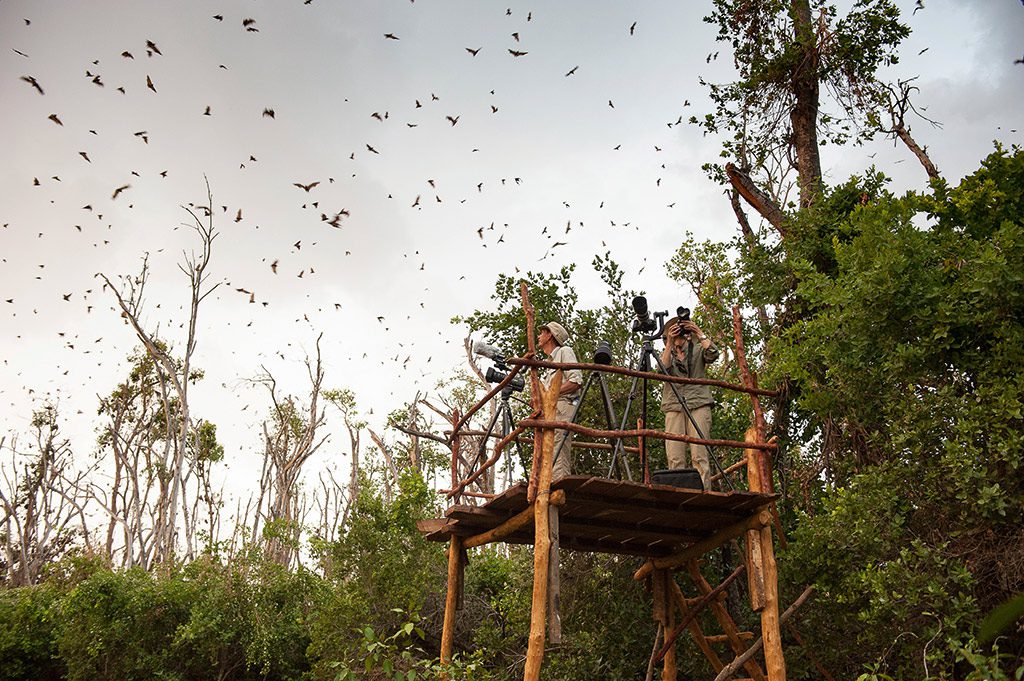
Kasanka National Park covers 390km2 of miombo woodlands, dry evergreen forest, swamp forest, papyrus swamps, grassy dambo and riverine forest, which are on the edge of the Congo Basin. The park is most famous for its migration of fruit bats, which converge here in November and December in numbers that exceed 10 million. They roost in the mushito forest in such high numbers that their enormous cumulative weight (each bat weighs half a kilogram) can cause tree casualties. The bats fly out at dusk on their feeding cycle, and virtually black out the sky for 20 to 30 minutes. They can be viewed on foot, or in certain spots including the NHK and BBC hides. The latter (shown above) is really just a platform above the trees, but it’s an amazing viewing spot, day or night. Fibwe Hide is 20 metres up a giant red mahogany tree and is probably the best place in the world to photograph sitatunga. You need an extremely long lens to pick off the shy antelope as they move through the dawn mist. I have snapped up to seven of these animals in an hour.
Getting there
Guided trips to see the bats are R360 per person ($25). There are two lodges, Luwombwa and Wasa, the latter being closer to the bat forest. Full- board SADC rates are R2 460 per person ($170), which includes the bat trip. The self-catering option is R1000 per person ($70) and R285 per person ($20) for camping. kasankanationalpark.com
3. Kaingo hides
Eastern Zambia
When to visit: Dry season only, May to October
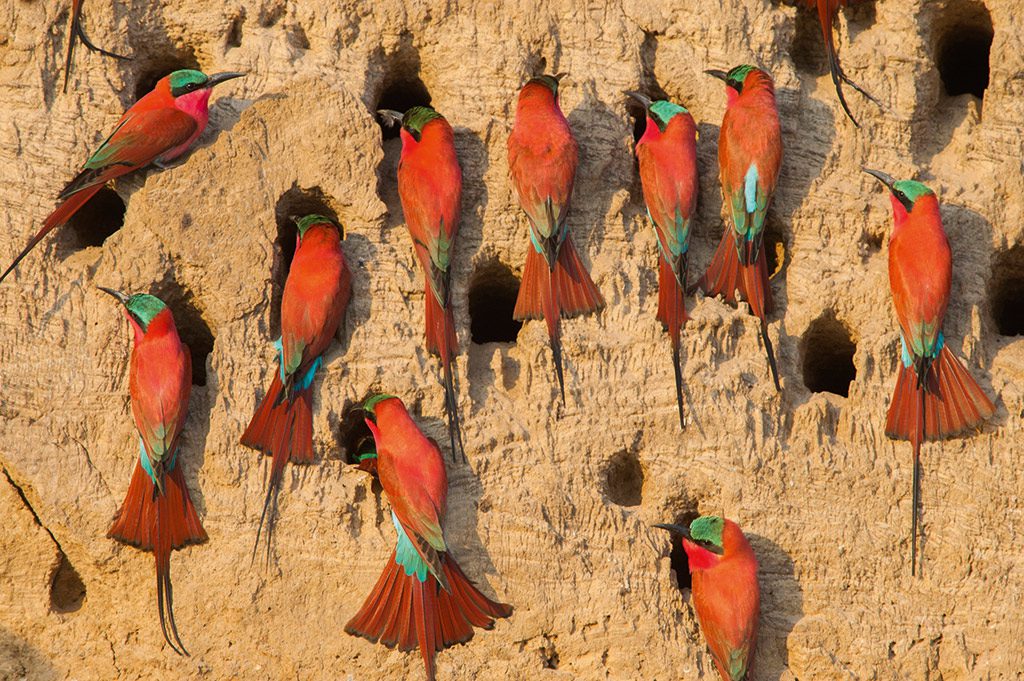
Like Derek Shenton’s Kaingo and Mwamba camps in South Luangwa National Park, the hides are rebuilt out of local materials each year after the summer rains. The three I have used are the Hippo Hide, Carmine Bee-eater Hide and Elephant Hide. Furthermore, Mwamba has the extremely productive Last Waterhole Hide, which attracts Cookson’s wildebeest and numerous other species, and is directly accessible from camp. The Hippo Hide is cleverly designed and exciting, built out of reed matting and reinforced into a steep-sided riverbank at the confluence of the Luangwa River and its tributary, the Mwamba. As the dry season takes hold, hundreds of hippos converge at ‘Hippo Corner’. As the river level drops, it becomes crowded and the grunts and territorial shows get increasingly exciting. The hide is reached by a set of sturdy metal stairs; it’s best in the fading afternoon light, although this is also the time when the leopards, for which this park is so famous, become active. It is also possible to get virtually eye level with the water on a special lower platform. The Elephant Hide is a sturdy tree platform. The elephants have crossed the river at this point for decades; when daily crossings are monitored by camp staff, guests are alerted. I have also had great success in the Bee-eater Hide, which is placed metres from the river bank and allows for great close-ups (as shown above). There is also a mobile hide near the lagoons. Kaingo has some of the best guides in the park, who can help with settings and getting people into the best positions for shooting.
Getting there
The hides may be used only by guests staying at Kaingo or Mwamba camps, and are included in the rates. From R10140 per person sharing ($706). A sleep out in the Elephant Hide costs an extra R2500 for two ($174). kaingo.com
4. Terrapin Hide
North West Province, South Africa
When to visit: May to October

Jaci’s Lodges does things creatively, and visitors to the Terrapin Hide are invited to order drinks, come and go as they please, and even write their names on the roof. It’s as fun, fantastic and free-spirited as the two lodges it serves. Jaci’s Lodges is in the Madikwe Game Reserve, in an eco-zone between the Kalahari and the Highveld biomes, so there is a wide mix of species to see, including wild dog, lion, leopard, rhino, elephant and smaller things, such as terrapins. Guests at Safari Lodge and Tree Lodge can visit the hide, which is located in the middle of a permanent waterhole, by day or night through an access tunnel. The hide itself is spacious enough for six to eight people, with views in three directions, and equipped with stools and sophisticated Gimpro heads (for all the latter’s knobs and joints, I find bean bags offer better flexibility of movement). There are two other levels to the hide for different perspectives on the water level, and where you can relax with a G&T and enjoy a topside view even if nothing comes to the water. Plus, there is a bed on a raised wooden platform for anyone wanting an overnight visit (with easy access to the tunnel of the Terrapin Hide). I used the hide on a children’s photo workshop, and it was a great place for them to work on their photo skills. At our evening slide show, one of the children produced a purple giraffe – a species not previously sighted in Madikwe! Daily game drives with a resident or visiting photo guide in a dedicated vehicle are available, as well as Canon 7D Mark II cameras with 100-400mm lenses to rent.
Getting there
Visits to the hide are free for guests at Tree and Safari Lodge, as is a night on the ‘starbed’ platform. Accommodation from R3295 per person sharing, including two meals (SADC rates). Guided photo drives from R750 to R950 per person. jacislodges.co.za
5. Onkolo Hide
Northern Namibia
When to visit: May to October
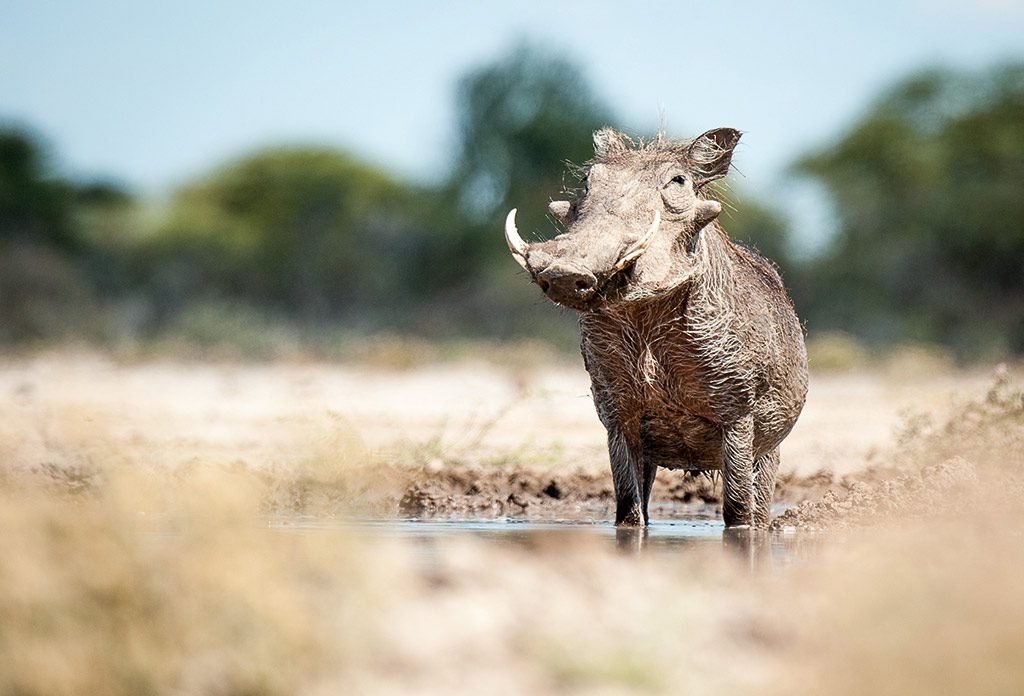
The hide at Onguma Game Reserve (above) had just opened for viewing and I couldn’t resist taking a look. I went at midday and there were springbok, kudu, jackal, kori bustards and warthog (below) aplenty. As the hide settles in, there should be excellent opportunities to photograph other game such as giraffe, rhino and lion. One of the guides told me that they had come to the hide one morning and found lions licking dew off the glass. Onguma is near the eastern Namutoni gate of Etosha National Park, bordering Fishers Pan. The reserve covers 34000 hectares of open plains, grasslands and woodlands. As is the case with Etosha, it’s at waterholes in this dry region where the action happens – it’ll be just a matter of time before lions take down animals right in front of Onkolo Hide. The hide has a sheltered walkway, so it’s easy to move to and from the hide without disturbing the animals – a great benefit for someone who wants to stretch their legs or go to the loo. Currently, there are no specialist photo guides at Onguma, but the opportunities speak for themselves.
Getting there
The hide activity is R320 per person including drinks. Onguma has five beautiful lodges – The Fort, Tree Top, Tented, Bush Camp and Aoba – and two excellent campsites. From R200 to R4430 per person. Guide fees are from R620 per group. onguma.com
6. Mashatu hides
Eastern Botswana
When to visit: May to October
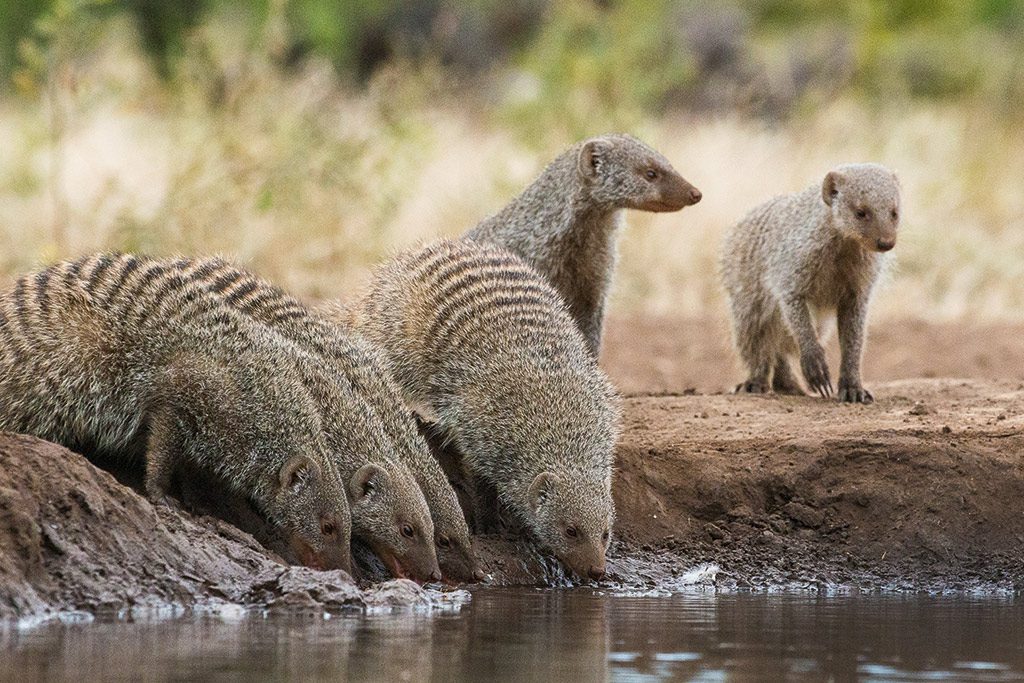
Mashatu covers 29000 hectares of private land within the Northern Tuli Game Reserve in the Mapungubwe Conservation Area bordering South Africa, Zimbabwe and Botswana. Topographically, it’s a fascinating place with rolling hills and good populations of lion and cheetah. The area is a corridor for elephants, and it’s not uncommon to see hundreds making their way through the region. There are no fences here so the area really has a wilderness feel to it. Acclaimed wildlife photographer and photo guide Shem Compion pioneered the eye-level hides here in 2011 and they have been a great success. It was at the Matebole Hide that South African photographer Greg du Toit took his award-winning image of ‘blue’ elephants, which won him the BBC Wildlife Photographer of the Year title in 2013. There are two main hides, Matebole and Elephant Valley, as well as the smaller infinity (reflection) hide and carmine bee-eater hide, which is set up depending on where the colonies are. Each must be booked in advance and takes the place of a morning or afternoon activity at the lodge. The resident professional photo guides accompany photographers to the hides and give excellent tips and tricks. The main hides are made from sturdy elephant-proof containers, accessed via a firemen’s step ladder from the top. I was with a fleet-footed friend on the far side of 80, and she found it a doddle. It’s not possible to leave the hide without scaring away the animals, so make sure you take a toilet break beforehand. Elephant activity is never guaranteed, and our visit in early June was after some heavy rains, but the procession of game and birds coming to drink was varied and interesting and would become even more so as the dry season progressed.
Getting there
Hide sessions cost R935 per person ($65) for half day, R1870 per person ($130) full day and R7 185 per person ($500) for exclusive use. C4 at PhotoMashatu has an equipped vehicle with a photography expert and guide for an additional fee. R7330 pp sharing ($510) in the lodge and R5390 per person sharing ($375) in the tented camp. Meals and game drives included. mashatu.com
This story first appeared in the September 2016 issue of Getaway magazine.
Our September issue features affordable destinations around SA, great photographic hides, and a Thailand travel guide. On shelves from 22 August.
